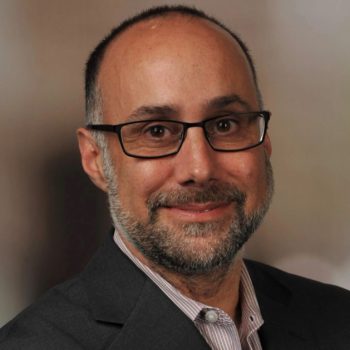The hyper-uncertainty surrounding the COVID-19 pandemic has been paralyzing for many philanthropic organizations. And even as funders have completed their initial emergency responses to the crisis, it’s much harder to figure out what to do next.
So, over the course of April and May, our team at the Monitor Institute by Deloitte talked with more than 75 social sector leaders about how they were managing in the midst of the COVID-19 crisis. We found that different organizations are preparing for wildly different futures.
Some leaders drew parallels to the 1918 Spanish Flu, which killed more than 675,000 Americans and caused unspeakable suffering for about two years. Yet after that crisis, many in the country just moved on. One historian called the 1918 flu “America’s forgotten pandemic,” writing that “Americans took little notice of the pandemic and then quickly forgot whatever they did notice.” Even today, there are few memorials or remembrances for a pandemic that killed more Americans than all the wars of the 20th century combined. Some leaders we spoke with see the COVID-19 crisis in much the same way: wrenching and painful, but ultimately an event that our communities will move past.
Other social sector leaders, however, are anticipating an entirely different future. They see a Great Depression-level of economic dislocation that could last for many years, alongside a major health crisis that will spark deep changes in how society functions. They see the crises creating huge levels of need in communities, while at the same time causing drastic, multiyear budget shortfalls for states, municipalities, and operating nonprofits alike. And, as these leaders see it, the COVID-19 crisis isn’t occurring in isolation. The activism for racial justice taking place across the nation is intersecting with the health and economic disparities laid bare by the virus. To these leaders, COVID-19 may mark the beginning of a fundamentally new era.
No one knows which of these realities (or others) might unfold. But there are a wide range of possibilities in play, and we know that it’s never a good bet to bank on a single one. ![]() Our experience suggests that when thinking about the future, many organizations don’t open their aperture wide enough and instead operate with an “expected version” of the future that serves as a baseline for their strategies and operations.
Our experience suggests that when thinking about the future, many organizations don’t open their aperture wide enough and instead operate with an “expected version” of the future that serves as a baseline for their strategies and operations.
While it’s common to create best- or worst-case forecasts around that baseline, it’s hard for philanthropic leaders — who have been urgently responding and caring for their communities and staff — to think about the future in a structured way and prepare to create impact across a range of different, plausible futures that might emerge.
Scenario planning is an approach to thinking about the future that is rooted in the recognition that even in the best of times, we can’t accurately anticipate what will come ahead. But decision-makers can begin to imagine multiple pictures of the future and rehearse how their organizations might respond to each.
Our team at the Monitor Institute by Deloitte — the social impact unit within Deloitte LLP — has used scenario planning processes for over two decades, working collaboratively with our colleagues at the former Global Business Network (which helped to pioneer the approach) and developing the resource guide, “What If: The Art of Scenario Thinking for Nonprofits” (written by our then-colleagues Diana Scearce and Katherine Fulton).
Now, in response to the current moment, we’ve released An Event or an Era? Resources for social sector decision-making in the context of COVID-19, a new scenario-planning resource for social sector leaders. (We launched the report last week in cooperation with CEP, New Profit, the Council on Foundations, Independent Sector, the National Center for Family Philanthropy, and United Philanthropy Forum.)
In the report, we explore:
- Prudent Assumptions: Baseline realities that organizations will need to come to terms with — and hold onto — in order to begin moving forward in the midst of great uncertainty.
- Critical Uncertainties: Factors that are not only volatile in terms of how they play out, but also have a high impact on how the future may unfold.
- Scenarios for the Social Sector: Four pictures of what the future could look like depending on the severity of the crisis and whether we come together — or come apart — as a nation.
- What to do Next: Advice about how organizations can use these scenarios to build resilience and prepare for whatever the future holds.
- Takeaways for the Sector: Informed by our interviews with social sector leaders, reflections on what the crisis may mean for the social sector as a whole.
We firmly believe that in this time of crisis, philanthropy has an opportunity to meet the moment and step forward with bold action and leadership. While funders may not be able to control the future, they can influence its trajectory. ![]()
Some foundations are adopting a “no regrets” mentality, taking unprecedented measures to increase spending to keep nonprofits afloat during the crisis (such as the social bonds issued by the Ford Foundation and several other major funders to allow themselves to significantly increase their payout rates over the next two years). Others are thinking about how to redirect funds from their focused strategies toward immediate relief for basic needs in the communities where they operate. And still others posit that philanthropy doesn’t have the resources to meet all of the needs that will emerge from the crisis, and that with new opportunities for change emerging in the crisis and additional crises (such as climate change) on the horizon, they need to “keep powder dry.”
Every funder will need to find the right balance across these very different — and often competing —needs.
We created this guide to help social sector organizations begin to think about these types of choices, and to talk about the future in a productive way that embraces the many possible scenarios that may unfold. We have found that the most resilient organizations are those that have a broader array of choices and alternatives as the future twists and turns. ![]() Our hope is that the guide can help funders and nonprofits figure out how to plan and move forward amidst the uncertainty.
Our hope is that the guide can help funders and nonprofits figure out how to plan and move forward amidst the uncertainty.
Gabriel Kasper is a managing director at the Monitor Institute by Deloitte, Deloitte LLP. He was previously a program officer at the David and Lucile Packard Foundation and a manager of neighborhood programs at the Berkeley Community Fund.
Justin Marcoux is a senior manager at the Monitor Institute by Deloitte, Deloitte LLP. He was previously at Cambridge Associates where he worked with foundations on investing their endowments.





